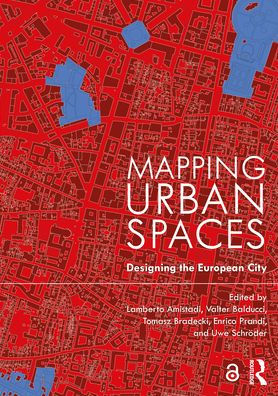Table of Contents
List of Contributors ix
Introduction The ArchéA Method Lamberto Amistadi 1
Part I Mapping Spaces: The Phenomenological Approach to the City of Spaces 5
1 A Spatial Understanding of Architecture and the City Uwe Schröder 7
2 Landmarks in a History of Spatial Mapping Felix Mayer 15
3 The Many-Faceted Notion of Space: On the Hypothesis of Mapping and the Observation of Spatial Phenomena Sarah Maria Schroeter 26
4 Stadtraumgestaltungen: On Perceiving and Reading Urban Spaces Timo Steinmann 34
5 Where the Compact and Open City Meet: Inner and Outer Spaces on the Periphery of Aachen North Ilaria Maria Zedda 44
6 Here and There: On the Ambivalence of Transitional Spaces Franziska Kramer 54
Part II Mapping Places: The Italian Tradition of Urban Studies 61
7 Drawing the City: Form and Meaning Lamberto Amistadi 63
8 Urban Events and the Soul of the City: The Poetic Political Tripartition of Urban Form Ildebrando Clemente 76
9 Civic Urbanity: The Places of Everyday Life Francesco Saverio Fera 86
10 Venice as a Paradigm: Urban Studies and the Value of Emptiness in the City's Design Giovanni Marras 94
11 Nature Prepares the Sites, But It Is Man Who Creates the Organism: Bologna through Its Geography, Its History, and Its Planning Tools Valentina Orioli 106
12 New Urban Landscapes: Fragments of Civil Architecture Gino Malacarne 118
Part III Mapping Natural Space: Greenspaces and Urban Design 131
13 The Role of Greenspaces in Urban Design Theories in France Valter Balducci 133
14 Greenspace as an Element for a New Urban Dynamic Fabienne Fendrich 146
15 Uses of Mapping: Methods of Investigation and Ways of Narrating Territory in Architectural Practice and Teaching Anne Portnoï 154
16 Towards a More "Natural" City? Jean-Marc Bichat Philippe Chavanes 164
Part IV Mapping Centralities: Urban Regeneration toward a polycentric City 179
17 The Long-Term Method of the Urban Project in Italy and the Parma School Carlo Quintelli 181
18 Designing the European Medium-Sized City: Urban Regeneration Technique through the Structured Densification of the Centrality System Enrico Prandi 193
19 The Project of a Metropolitan Urban Centrality: The Case of the Former Fruit and Vegetable Market of Bologna Paolo Strina 206
20 Densification as the Key to Suburb Regeneration: The Case of Driescher Hof in Aachen Giuseppe Verterame 215
21 The European Medium-Sized City: The Characteristics of the Urban Form Marco Maretto 225
22 The Idea of Space and Urban Sequences: The Case of Parma Carlo Gandolfi 236
Part V Mapping Social Space: Demographic Analysis as an Image of Urban Complexity 249
23 Mapping Urban Spaces with the Use of Physical, Digital, and Augmented Reality Models: Experiences from Applications in Architectural and Urban Education Tomasz Bradecki 251
24 The Urban Circle of Life of People with Disabilities: Mapping Urban Inconveniences Katarzyna Ujma-Wasowicz 261
25 Multigenerational Spaces in Conceptual Urban Projects in Polish Cities Agnieszka Labus Pawel Woznicki 270
Afterword Problems of the Contemporary City Raffaella Neri 283
Index 291



